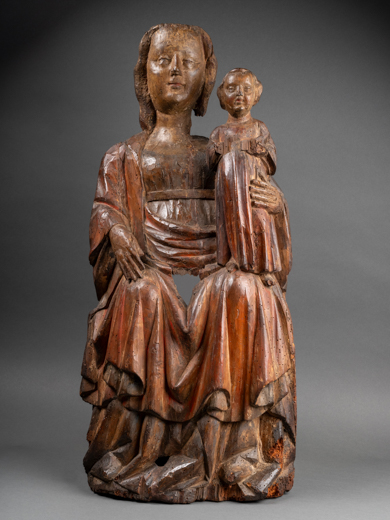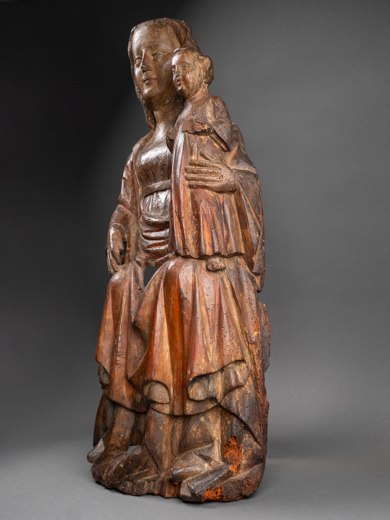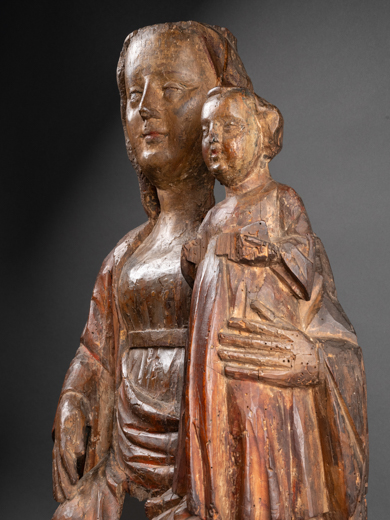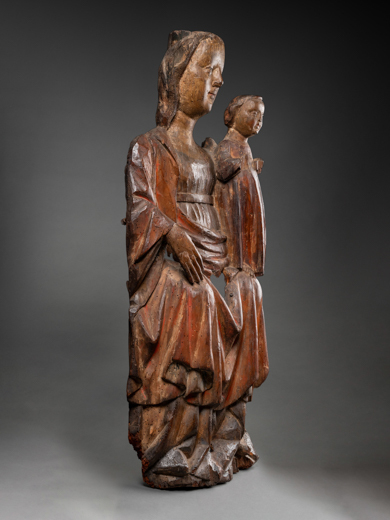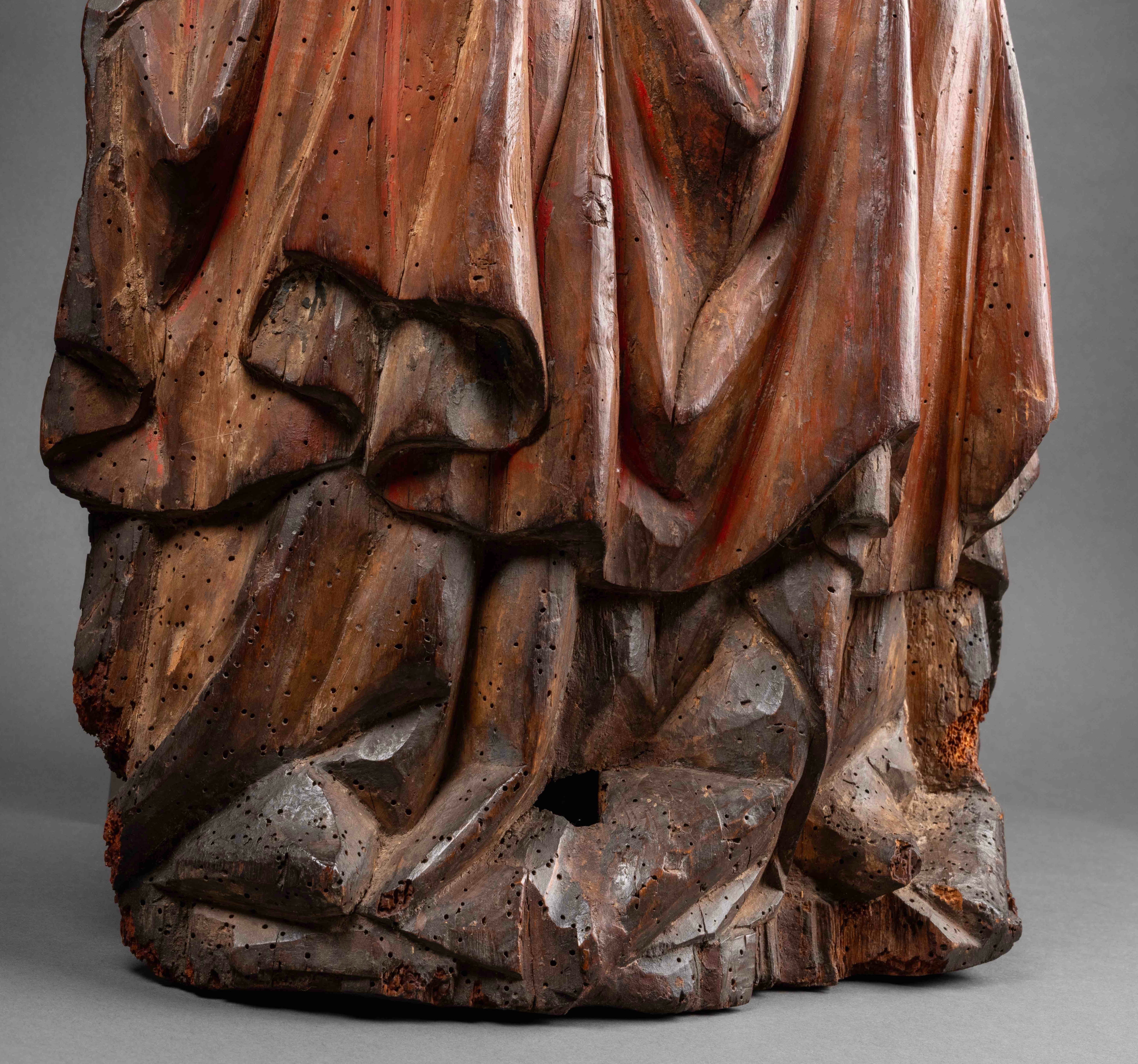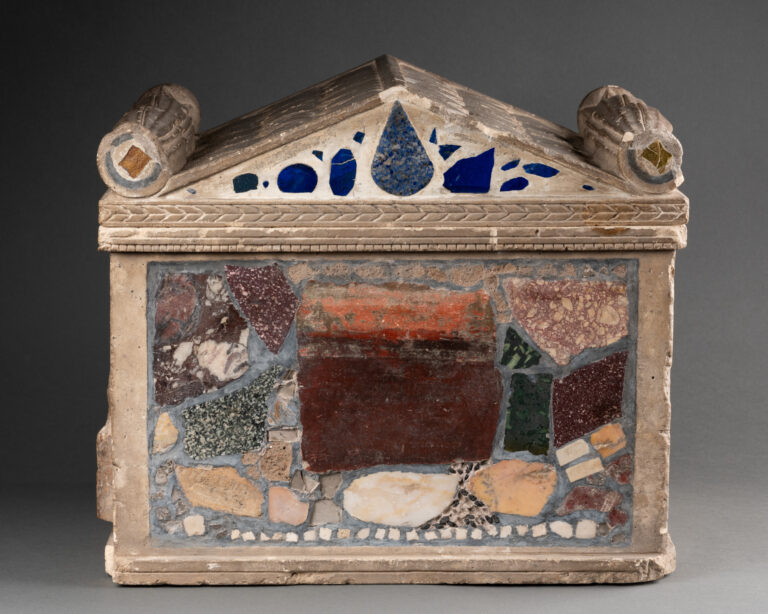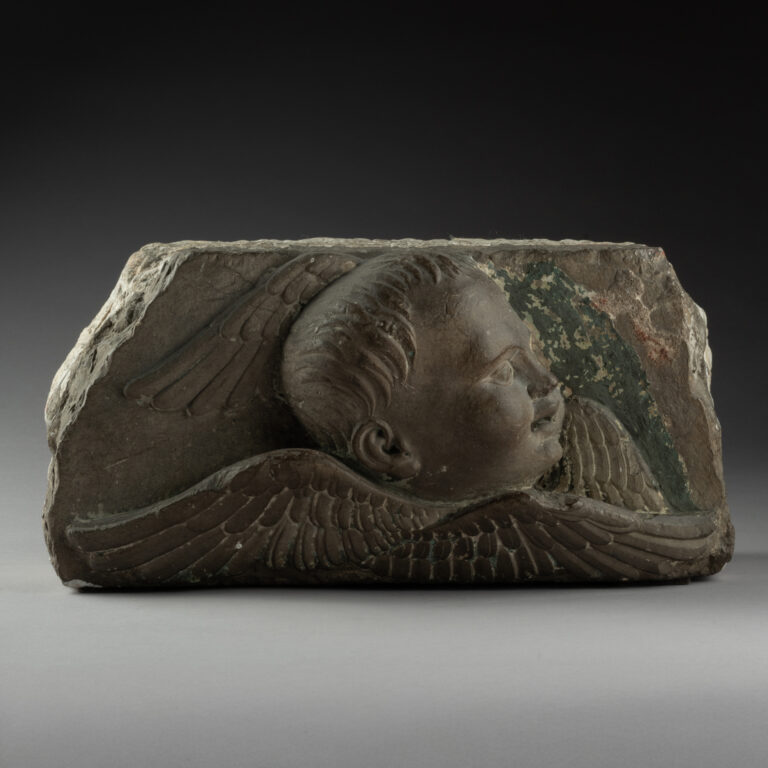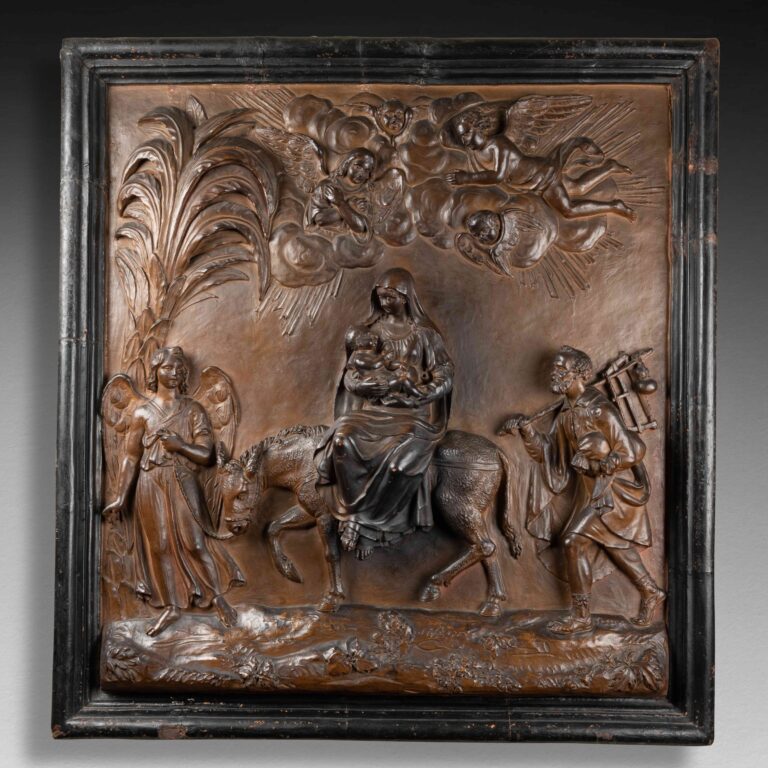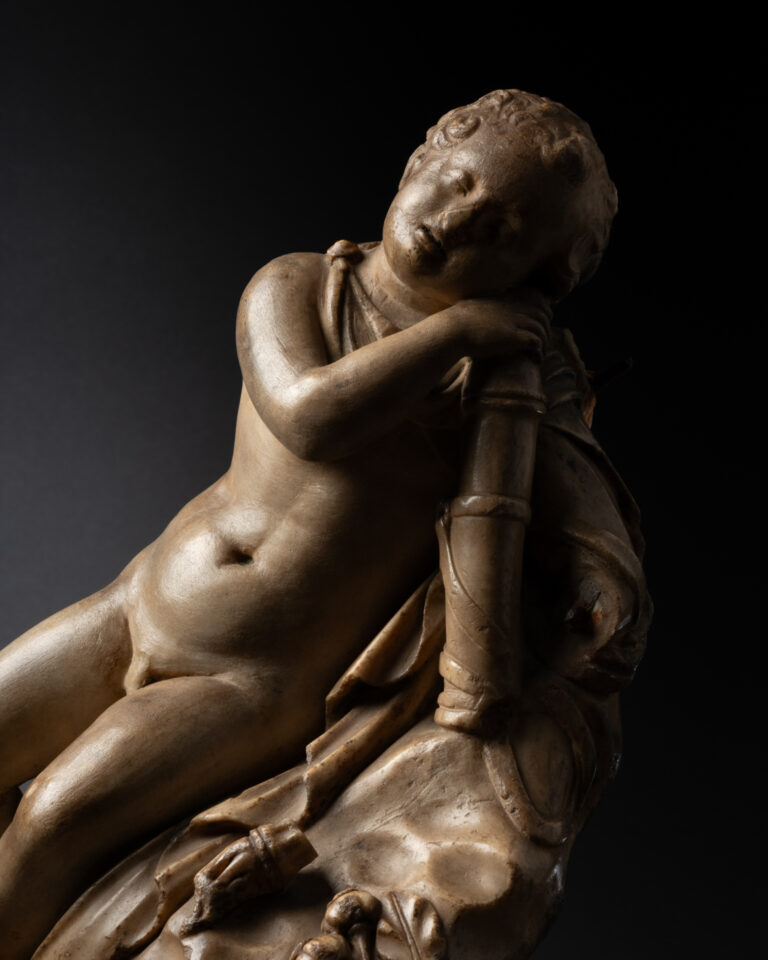Provenance :
Ancienne collection privée belge
This remarkable early artwork portrays the Enthroned Virgin and Child, also known as Sedes Sapientiae, which translates to the ‘Seat of Wisdom’ or Throne of Wisdom and specifically alludes to Christ’s both divine and humane nature. Christ is considered as the Divine Wisdom incarnated through Mary (Logos Incarnata); Mary therefore is the bearer (the Throne) of this Divine Wisdom. The base for this theme was laid at the Council of Ephesos in 431 A.D. when Mary was dogmatised as given childbirth to Christ, and titled « Theotokos ».
The Sedes sapientiae composition was central to the Marian cult during Romanesque times, with the Virgin appearing in her dual role both as Mother of God and of man, simultaneously presented with Christ seated on Her knee, whilst being enthroned as Queen of Heaven. From the 10th century onwards the « Sedes Sapientiae » emerges as the main –almost only- piece of freestanding sculpture; meaning independent from the architectural iconographic program of the church building. The „Sedes Sapientiae » probably is the idol of medieval Christianity and played an important part in the rural communities; the Sedes mediated between this world and the divine communion of the Saints in all possibly aspects of daily and ecclesial life.
Exquisitely carved, Mary is depicted seated on a throne in a rigid, frontal position, with the Christ Child standing on her left knee. Mary’s countenance is directed toward the viewer, with an oblong face and a prominent high forehead. A subtle smile seems to grace her lips, and she wears a short veil, accentuating her delicate and symmetrical features. Her nose is long and straight, and her eyes possess an almond-shaped elegance.
Mary is attired in a tunic that drapes elegantly to just above the ground, with only one of her shoes visible. While the Virgin appears serene and composed, her son, the Christ Child, exudes a more animated presence, particularly conveyed through the positioning of his feet. He personifies divine wisdom in human form, and his countenance bears an uncanny resemblance to that of a miniature man.Rarely, it preserves traces of original polychromy.
While the composition of the artwork adheres to the rigidity often associated with Romanesque sculpture, this characteristic is intriguingly contrasted by the graceful flow of the drapery and the expressive faces. The drapery, in particular, exhibits a refined quality, convincingly enveloping and revealing the forms beneath. Both Mary and the Christ Child are endowed with subtle, enigmatic smiles.
There are two prominent regions where the „Sedes Sapientiae » was developed and remained popular until the late 13th century: the South/East French / Pyrenean area, with as earliest example the now lost « Madonna of Clermont-Ferrand », dating from ca. 946; and the northern Rhine / Mosan area, with as earliest example the so called « Goldene Madonna » at Essen, dated between 973 and 1050.
This sculpture stands out due to its humanized depiction of the figures and the relative naturalism of the meticulously sculpted drapery. The almond-shaped eyes, straight nose, understated smiles and the heavy drapery with multiple folds place it within a distinguished category of ‘Sedes Sapientiae’ sculptures originating from the Mosan region in modern-day Belgium, dating to the late 13th century.
Romanesque wooden sculptures from the 13th century are scarce, compared to the healthy number of later ones; this magnificent representation is of high quality and greatest rarity.
Related Literature:
- Art mosan et arts anciens du pays de Liège, exh. cat. Liège, 1951, p. 208, no. 368
- Exhibition catalogue Rhein und Maas, Kunst und Kultur 800-1400, Künsthalle Köln, Cologne, 1972, pp. 387-406, 420-428, 445-456
- Ulrike Bergmann, Die Holzskulpturen des Mittelalters (1000-1400), Schnütgen-Museum, Koln, 1989
- J. Lièveaux-Boccador, E. Bresset, Statuaire Mediévale de collection, Tome I, Les Clefs du Temps, Italy, 1972
- R. Didier, ‘La Vierge assise à l’enfant (Sedes Sapientiae), Millénaire de la collégiale St-Jean de Liège, exh. cat. church of St-Jean de Liège, Liège, 1982, pp. 123-140, figs. 9 and 11
- R. Koechlin, La sculpture Belge et les influences Françaises aux XIII et XIV siècle, Paris, 1903
- J. J. M. Timmers, De kunst van het Maasland, vol. ii, De Gotiek en de Renaissance, Assen, 1980, pp. 143, 146-147, figs. 234, 235
